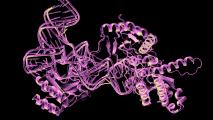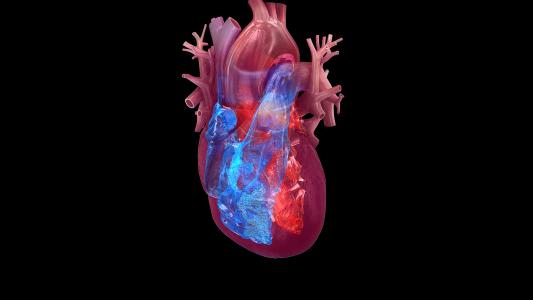Tel Aviv University researchers have developed a novel, noninvasive way to kill tumors: bubbles.
Specifically, cancer-killing nanobubbles. These infinitesimal gas bubbles surround the tumor and then can be exploded via ultrasound, creating “therapeutic warheads,” as the team artfully put it in their study, published in the journal Nanoscale.
“Our new technology makes it possible, in a relatively simple way, to inject nanobubbles into the bloodstream, which then congregate around the cancerous tumor,” lead researcher Tali Ilovitsh said in a statement.
“After that, using a low-frequency ultrasound, we explode the nanobubbles, and thereby the tumor.”
Researchers have developed a way to turn nanobubbles into “therapeutic warheads” to destroy tumors.
Ultrasound: Current operating procedure for solid tumors involves surgically removing the malignancy, then using complementary therapies — e.g. chemotherapy, immunotherapy, radiation therapy, hormone therapy — to mop up the rest of the cancer cells.
While often effective, there are drawbacks to current methods; surgeries are, by definition, invasive procedures and carry significant risks.
Blasting a tumor with ultrasound is a noninvasive option, but it has its own strengths and weaknesses, the researchers note. The high-energy ultrasound waves can destroy tumors in a localized way, even deep within the body — but even with this greater level of discretion, those same waves can damage the healthy tissues surrounding the cancer.
The Tel Aviv team’s solution is to combine ultrasound therapy with nanobubbles.
“The combination of nanobubbles and low frequency ultrasound waves provides a more specific targeting of the area of the tumor, and reduces off-target toxicity,” Ilovitsh said.
Nanobubble bombs: For their case study, the researchers used mouse models of breast cancer.
The team injected nanobubbles into the mouse’s bloodstream, which made their way to the tumor.
“We don’t touch the tumor directly, but rather inject the nanobubbles into the blood,” Ilovitsh told the Times of Israel. “We then take advantage of a unique quality of tumors. Blood vessels in tumors are ‘leaky,’ which means that the nanobubbles don’t stay there but rather many of them leave the vessels and go into the tissue tumor.”
When the nanobubbles are in place, applying low-frequency ultrasound caused them to explode — destroying the cancer cells.
With the nanobubbles in place, applying low-frequency ultrasound causes them to explode — rending apart the cancer cells.
Think of it like demolishing a building using precisely placed, controlled explosives, Ilovitsh told the Times of Israel. The target building comes crumbling down, but its neighbors remain damage-free. (Well, when done right.)
Next steps: The team believes their technique can move from mouse models to people, where it could provide an alternative to current front-line options.
“This approach can help in the treatment of tumors that are located deep within the body, and in addition facilitate the treatment of larger tumor volumes,” Ilovitsh told the Times of Israel. “It could replace, in some cases, surgery to remove tumors,” which would then be followed up by complementary therapies as usual.
We’d love to hear from you! If you have a comment about this article or if you have a tip for a future Freethink story, please email us at [email protected].






